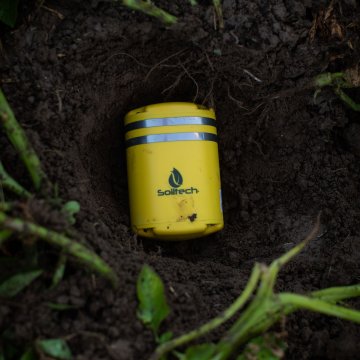Ehsan Soltan, the telecom owner of Soltan, has found a way to apply his experience and skills to solving real-life agricultural problems. He developed a wireless self-contained humidity sensor. In the past, farmers had to take soil samples to a laboratory to plan irrigation. Soltan’s idea will make these problems a thing of the past.
He has already tested several sensor options with potato farmers, who helped him test the design of the device and gave him quality feedback & nbsp; connection.
After initial testing on a 3D printer, 50 sensors were produced & nbsp; for five farmers. After the first experiment, they decided to equip the device with an accelerometer and a GPS beacon. This is how the Soiltech sensor evolved into a modern multifunctional device.
It is laid in the ground along with the tubers when planting. Special complex setup or registration of a SIM card is not required. Data is recorded and transferred via the cloud. They can be viewed both on the phone app and on the web platform throughout the growing season. Data is also recorded during harvesting and transporting crops.
Soiltech sensors use LTE CAT-M1 technology, which provides longer range and high throughput. The signal from the device is transmitted through the soil and vegetation using existing cell towers. Other devices requiring adjustment and calibration usually cannot be used until mid-growing, Soiltech starts collecting data from the moment of planting.
Now, in addition to potato fields, the sensor can be used for growing onions, sugar beets, sweet potatoes, alfalfa, perennial grasses for hay, barley, corn, beans, watermelon and cotton. The device can be used to grow a variety of crops over several seasons. Soltan recommends that manufacturers install multiple devices in the same field.
Data-driven technologies are gradually entering the agro-industrial complex. They help farmers reduce costs, increase profits and conserve nature.












